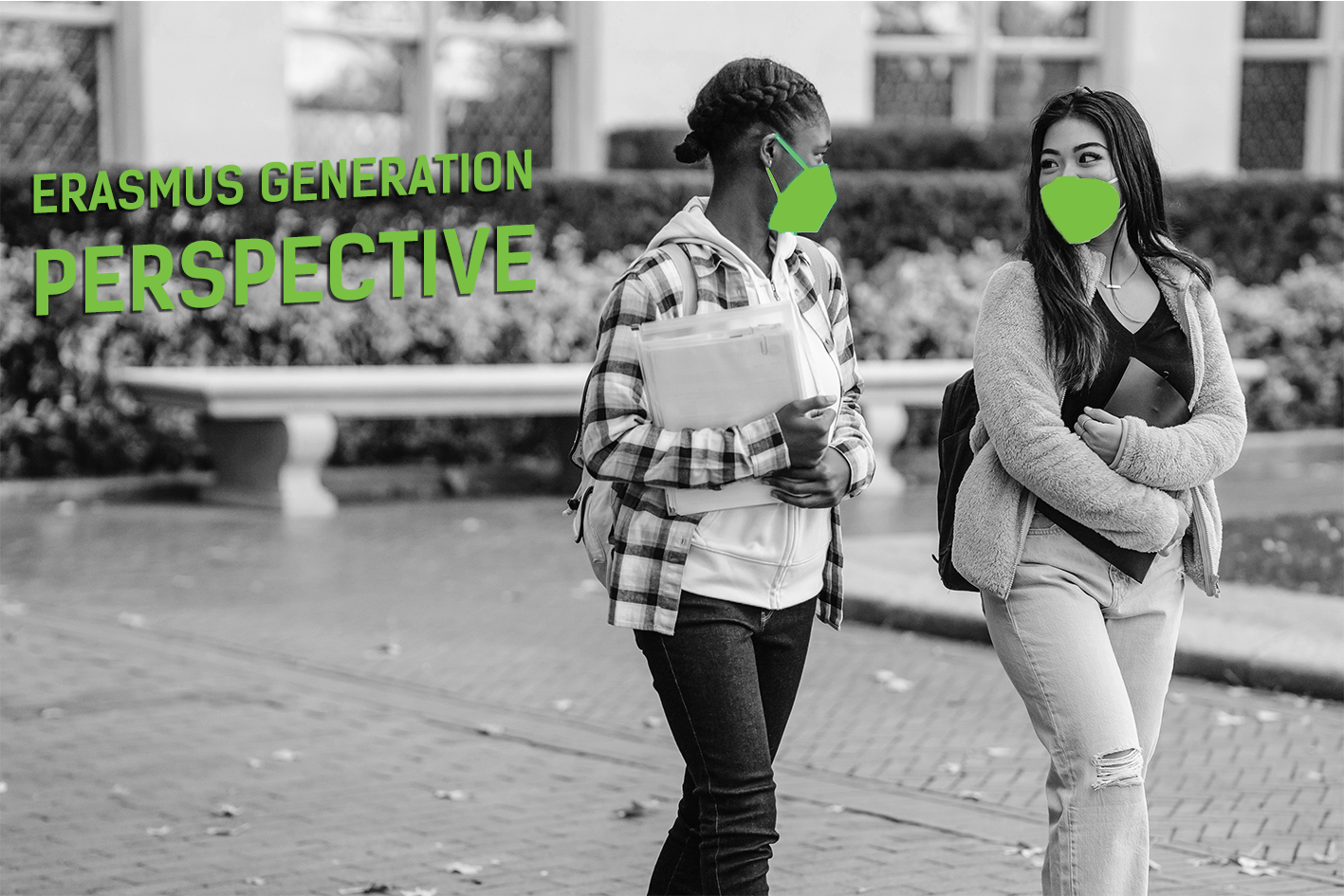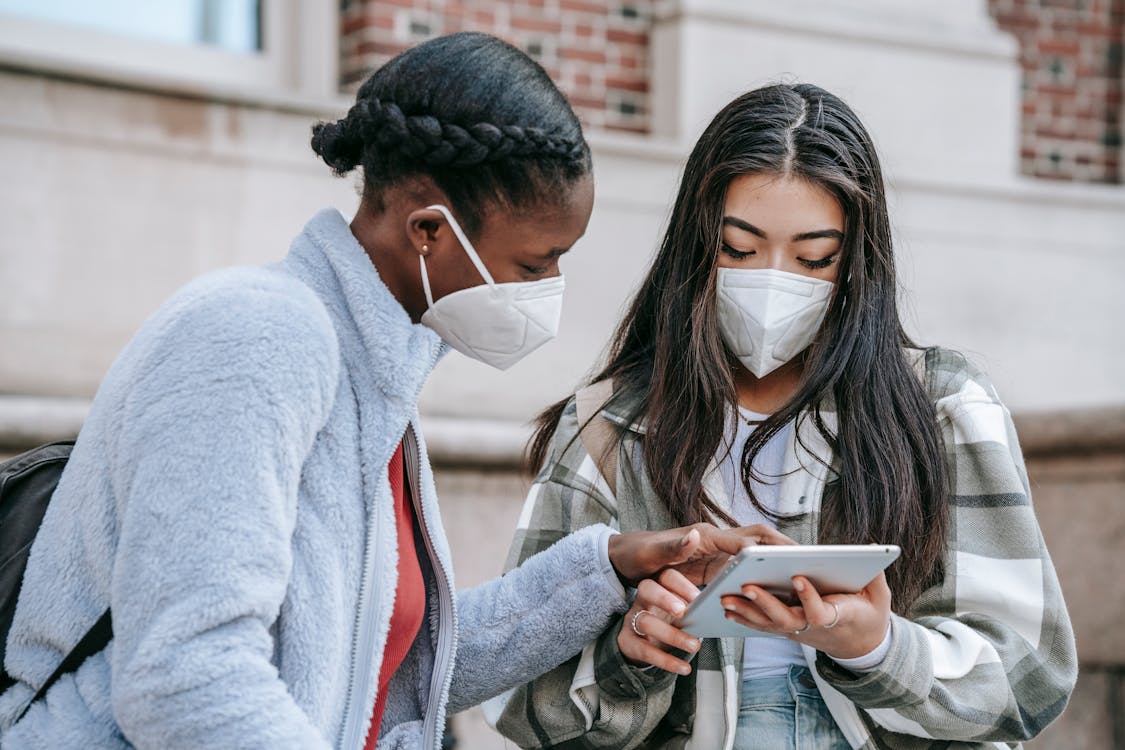
* Erasmus Generation Perspective articles are written by ESN volunteers to share the student voice on current policy developments in the field of international education. The text represents the authors' individual perspective and not an official statement of the Erasmus Student Network.
During the past 1.5 years, we were all made aware that our life circumstances have changed dramatically in all aspects, much to our surprise and discomfort. Among many others, one of the most profoundly and visibly affected areas was that of Higher Education on a broader and more global scale.
With the continuous and seemingly never-ending waves along with the vaccination procedure, the future of education is now a question that ought to be addressed and answered for millions of individuals. Higher education leaders around the globe are rethinking how to respond to post-pandemic changes. Will the courses take place in person, or should they continue solely online? How will the exchange programs proceed? What are the best suitable coping mechanisms for different institutions worldwide prioritizing the safety of students and staff? Even though we wish there were a ‘panacea’ for both the virus and to address these questions, there is none as of yet; what we do possess, though, are different types of evidence to be discussed to aid us in acknowledging and comprehending the possible future, commencing from the upcoming fall semester of 2021 and the 2022 academic year in higher education.
As is the norm, so to say, the trends not only in higher but in education overall change almost every year. However, with the unforeseen pandemic that occurred, the most significant change so far took place in the spawn of a few months. The path ahead has shifted to one fully utilizing all the technological means that we might have been aware of in the back of our mind, such as various applications and software used to communicate and organize meetings but never actually familiarized ourselves with. Compared to traditional lectures that should now be left far behind, we expect to continue a blended education regime in the field for the upcoming academic term, aiming for a safer and more effective learning environment. Remote and ‘micro’ internships seem to continue growing with the support of hybrid systems.
Additionally, some institutions are looking into expanding policies on remote work to include a range of scenarios from weekly flexible schedules to 100% distributed working environments. Last but not least, the conferences and meetings are likely to be held face-to-face, always maintaining the necessary precautions and sanitary rules. However, joining many events online seems to be a significant trend gaining vast popularity providing many individuals with a chance to choose between the two options.

When we consider blended/hybrid learning as the possible future for the next semester, a new door opens, and where a new door opens, and we get an answer, many further questions arise. On this occasion, the million-dollar question is focused on how educational institutions will continue to cope with the challenges they face. Undoubtedly, the main concern was the unpredictability of a substantial ‘learning leak’ due to the abrupt and swift shift to a different system without having the luxury of a testing period. It is still recommended for institutions to hold transition periods for those in need of still catching up. Furthermore, another challenge would be a combination arising from maintaining all the required measures to ensure further prevention of spreading the coronavirus, which creates an environment of uncertainty, wariness, and mental fatigue, significantly impacting students’ mental health.
According to last year’s survey held by ‘International Student Recruitment,’ 60% of prospective students stated that mental health services are an essential factor in their search for a university. Half of these students reported not considering this as a crucial factor before the COVID-19 waves. Therefore, guidance and virtual mental health services are considered nowadays as the new way of coping with mental health problems and the spread of COVID-19.
After conducting thorough research on many universities’ websites, it can be supported that promoting vaccination for staff members and students is preferred by many institutions. The majority of the universities request for a complete vaccination as a prerequisite to attend the premises and classes. At the same time, some even offer vaccination on campus with prior appointments, a measure upheld mainly in the United States. The use of masks as a practice is adopted by most teaching institutions worldwide. During the next academic year, it shall continue for a safer environment while activities are advised to be held outdoors with social distancing and hygiene protocols as the norm.
On a more pragmatic and ‘tangible’ matter, many economic implications have burdened both universities and students alike; the former has been afflicted by an unforeseen lack of newly enrolled students while the latter had to make the tough call to postpone by a whole semester or even cancel long-scheduled and very anticipated plans.
Hence, starting various educational institutions came to the realization that a way to adapt would be by amending their tuition fees. From March onwards, many universities globally have reduced their tuition fees in light of the pandemic so as to mitigate the economic impact on both parties. Additionally, another provision - that always existed but is now more prominent than ever - is the financial assistance offered to students by institutions and the possibility to settle the tuition fees in a more flexible manner. It is therefore urged for students to check and request whether their institutions offer and if any kind of aid may be provided.
An example of university aid and an act of goodwill resulted from many individuals swapping their pencils and pens with keyboards, therefore, creating a surge in the need for specialized materials. The University of Strasbourg and its Foundation consequently set up an Emergency Fund for its students raising the amount of 61 000 euros to provide students with computers and internet connection.

On another matter, many institutions were late or have not yet clarified whether they will accept incoming Erasmus students. On the bright side, we’ve had a substantial number of universities holding in-person summer programs, which have met great success, sending a positive message and giving hope for a return to academic classrooms.
Around mid-June, the European University Foundation launched a platform where European universities can keep indicating whether they will accept Erasmus students for the coming semesters and the availability for online classes. Students opting to go abroad and especially potential Erasmus students can utilize the online database by accessing the following hyperlink: https://covid.uni-foundation.eu/
To conclude, we can expect that many universities are willing to carry on with hybrid education, accepting new exchange students with a continuation of the blended learning between remote-studies and presence in the classrooms, but even at the moment that this article is being drafted, it is yet to be seen, and there is no standard rule or guideline for all. Consequently, continuous monitoring of the respected institutions’ websites is strongly advised. The new academic semesters were and will continue to be like no others in precedent history. The new ‘modus operandi,’ with regards to teaching and learning as the aftermath of the Covid era, is bound to continue.
Sources:
- The Time is Now for Higher Education Leaders to Plan for Next Semester
- The evolution of higher education: 2021 trends
- 2022 Strategic Trends Glossary | EDUCAUSE
- Considerations for the 2021-2022 School Year · The Hunt Institute
- How do schools and universities cope?
- Vaccines On Campus - NYC
- Considerations for Institutions of Higher Education (IHEs)
- Oglethorpe to offer COVID-19 vaccine clinics on campus
- The Growing Importance of Mental Health in University Choice
- Considerations for Institutions of Higher Education (IHEs)
- Universities Changing Tuition Fees in Response to Coronavirus
- Erasmus+ Covid-19 Mobility Status
- Coronavirus Updates | Health & Safety
- Covid-19 FAQ: Information for applicants and admitted students
- COVID-19 Campus Updates For European Business Schools

Follow ESN